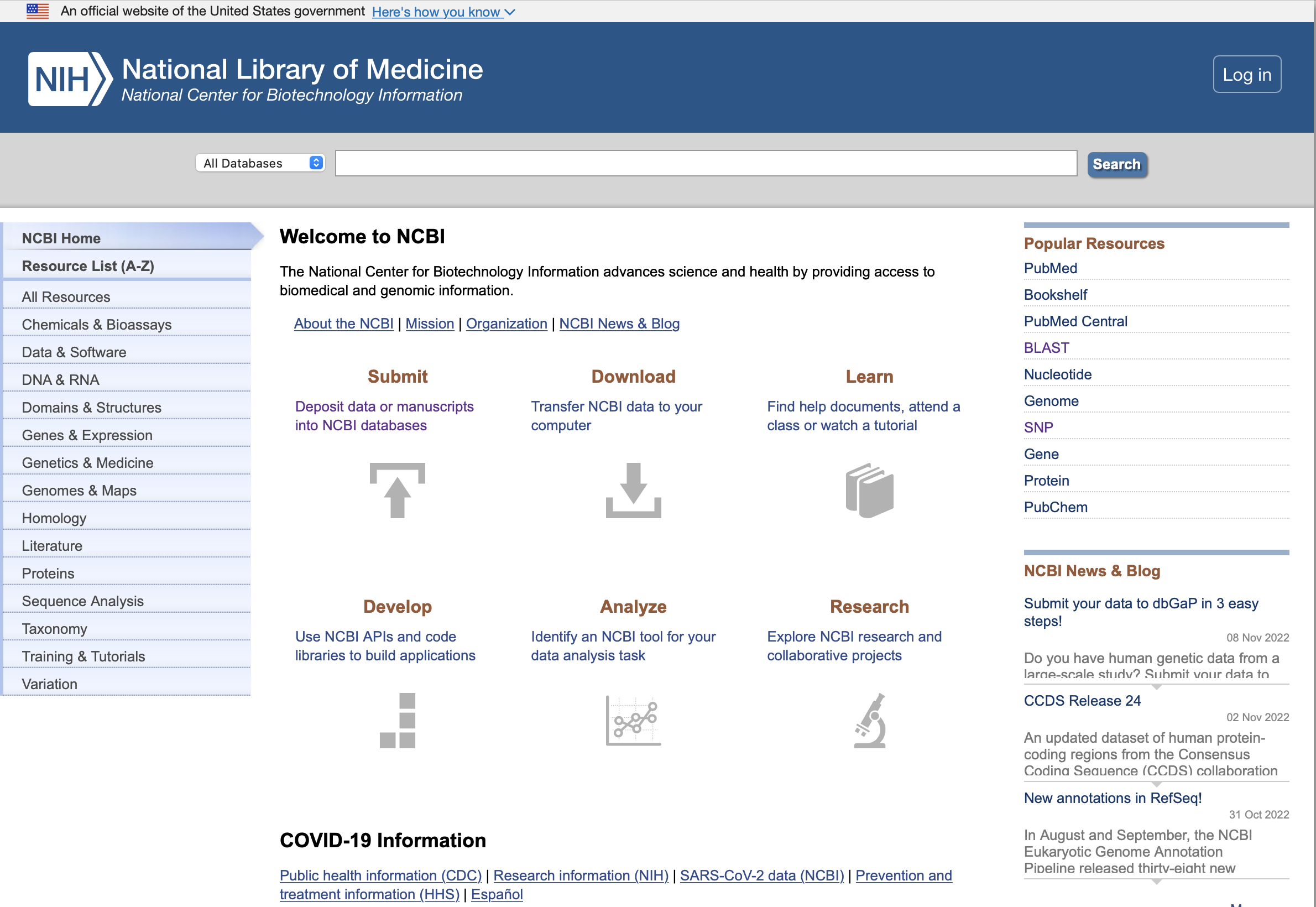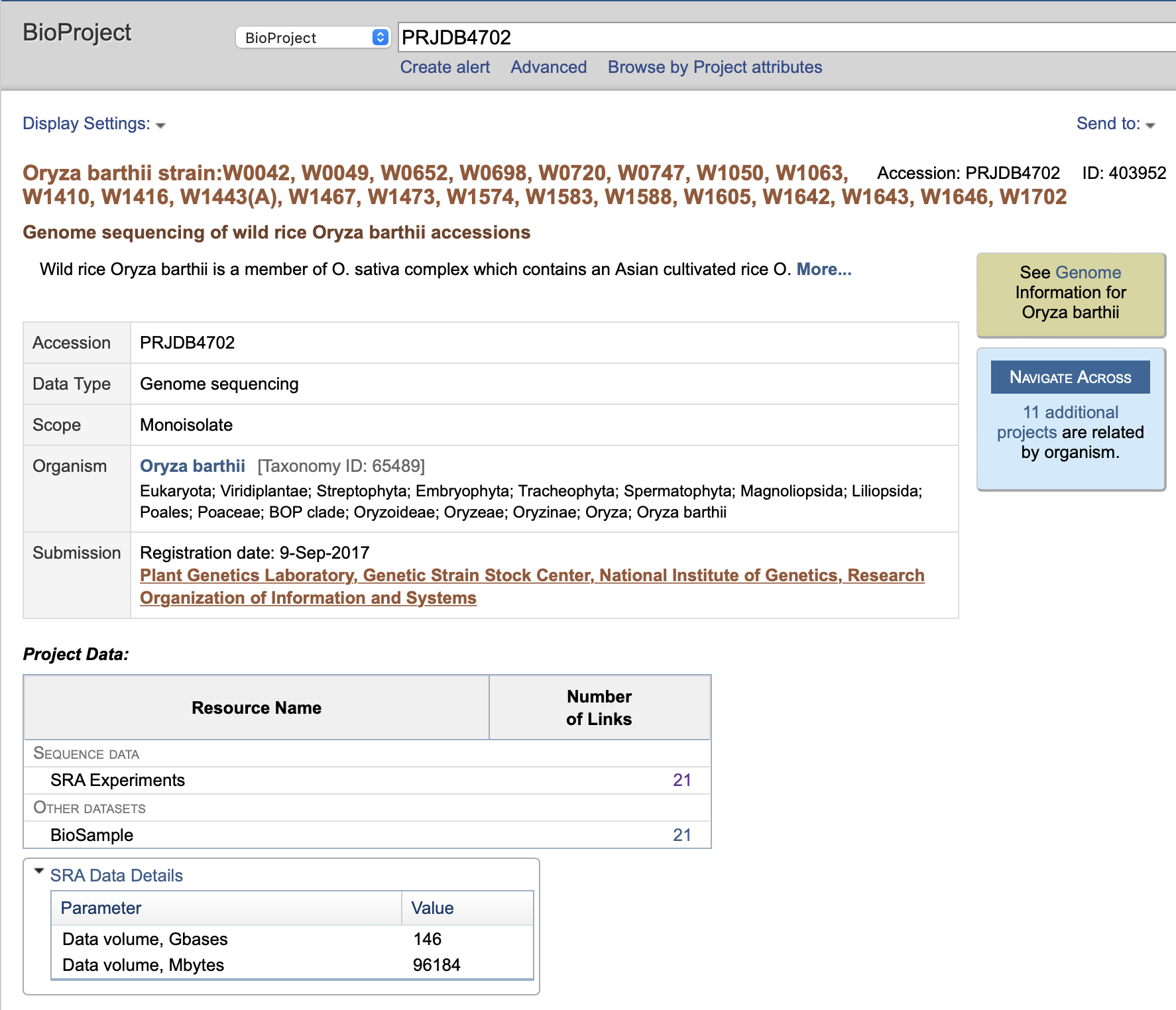Associated published paper discovery
Q: How can I confirm that I have found the correct associated published paper?
Here are some tips and tricks for checking that the paper you have found during your paper search is the correct paper to be associated with the BioProject.
You have likely found the correct paper if:
- An associated accession number with the BioProject is listed in the paper.
To see all related accession numbers and detailed information about the BioProject submission, we recommend you visit https://www.ncbi.nlm.nih.gov.

Next, select what you will be searching on by navigating to BioProject in the drop down menu denoted by the red arrow in the image below and add your BioProject accession number to the search denoted by the red circle in the image below.

Once you click search, you should be brought to the BioProject homepage which includes additional metadata about the BioProject as well as information about SRA experiments and BioSamples.

In the paper, the accession numbers are commonly found in the data availability section or methods section of the paper. It will be worthwhile to check the methods to confirm that the genetic/genomic sequencing was conducted by the research described in the article and to see if the samples were collected by the same project or were being reused from another study.
-
The title of the BioProject matches the title of the paper.
-
The deposit year of the BioProject, the authors/authors’ affiliation, and/or the study species match those of the paper.
You can check these fields by referencing the following Google Form fields when looking through papers.
Limit your search by the publication date of the BioProject. This information can be found in the registration_date_bioprj field of your Google form. Note that the published article may have been published before or after the BioProject.
The authors or authors’ affiliation is listed in the contact name sra all field of the Google form. Looking at an article you will see authors listed often with numbers next to their name referring to their below listed affiliation.
You can find the study species in the Species all field of the Google Form. Look through the article to see if the same species are listed as being studied.
Q: When should I select false for the paper availability? You should only select false for paper availability once you have exhausted all potential search strategies, including searching by title, by BioProject accession number, by a combination of title, year, study species, and author information filtering, etc. Thus, false will be used when you have exhausted all searches and still cannot either limit it to a likely single associated published paper or can’t find any published paper at all.
Relevance
Q: How should we handle plant grafts and clonal populations that were taken from the wild?
We are prioritizing natural populations in this Curate-A-Thon. We can take any biosample that was born as the result of a sexual reproduction event in “the wild”.
Q: How should we handle projects/studies that include both domestic varieties and their wild counterparts, as well as hybrids?
Prioritize projects for which either at least 50% of BioSamples are from natural populations or at least 50% of sampled populations are natural populations.
Q: How should I handle wild-caught BioSamples that were taken from markets?
Read in the materials and methods to see if you can learn about how the authors established provenance and sampling locality. Try to understand what geographic locality and associated uncertainty is ascribed by the authors when making their inference.
GEODE
Q: How do I find out more about these metadata initiatives and contribute?
The rationale for, and capability of, the Genomics Observatories Metadatabase (GEOME) is described in Deck et al. (2017) and Riginos et al. (2020). We encourage you to also visit the webpage (www.geome-db.org) and explore GEOME. You are welcome to request to join an existing project or team, or to create your own. We also invite feedback on current functionality and ways in which GEOME may better accommodate your research needs. If you see the value of GEOME, you can promote its wider use by encouraging colleagues, students, and authors of manuscripts you review or handle as an editor.